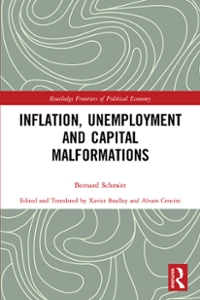Solve the following attachments.
Question 3: The Closed-Economy IS-LM-FE Framework (25 Marks) Consider the following closed economy: 0\"\" = 150 20m + 0.8(1' T) l" = 200 20m Government purchases, G equal 100 and the government runs a balanced budget. The liquidity function is given by: 110", 1'} = 200 + 021' 5003' The nominal money supply, price level and expected ination are: M2300 P22 ire=0.05 (a) Derive the IS curve with the real interest rate r as a function of output 1'. (b) Derive the LM curve with the real interest rate r as a function of output Y for the given price level, P = 2. {c} Find the longrim equilibrium values of the real interest rate 1", full employment output, 17, consump tion C, and investment I. Illustrate the results using 3. IS LM FE diagram to depict the long-run equilibrium. (d) Imagine that a nancial innovation reduces the demand for real money balances so that the new liquidity function is: LG\1 Problem 1 Two smartphone producers, rm A and rm S, are competing in the smartphoue industry by producing identical products. Market demand for smartphonu is given by Q = 360 P. The two rms have identical marginal cost at M C = 10, and they do not have xed costs. Assume rm A moves rst by setting their quantity, QA, and then rm S observes A's choice and chooses their own quantity Q3. 1. Find the optimal quantities that each rm will produce, each rm's prot and the total surplus. 2. Now, assume the two rms choose their quantities simultaneously (that is, they are in a Cournot competition). Calculate the optimal quantities and prots of both rms as well as the total surplus, then compare with part 1 and explain the differences. 3. Going back to part 1, what would happen if, previous to rm A making its decision, rm S announces to rm A that no matter what rm A does, rm S will produce the amount that we calculated in part 2? In other words, that rm S will produce the quantity that would be optimal if this was a Coumot competition. Can rm S get better prot by making this 'threat' ? Why or why not? 4. Going back to part 1, how much would both rms produce if rm S cannot observe rm A's choice? In other words, calculate the optimal Q3 and Q A under the assumption that rm S is still the second mover but now when rm S makes its production decision, they cannot get any information on what the rst mover, rm A, chose to do. 1. Draw an Edgeworth Box for an exchange economy with two consumers, John (J) and Kelly (K) and two goods, Apples (A) and Bananas (B). Put Apples on the horizontal and Bananas on the vertical. Put Kelly's origin in the bottom left corner. Both J and K have strictly positive endowments of both goods with ex tex > eg ten. Show an endowment point in this economy where ex > ex and ep










